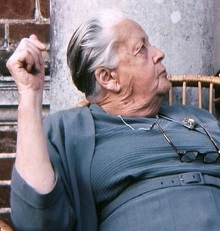
Gordonstoun School is a co-educational independent school for boarding and day pupils in Moray, Scotland. It is named after the 150-acre (60-hectare) estate owned by Sir Robert Gordon in the 17th century; the school now uses this estate as its campus. It is located in Duffus to the north-west of Elgin. Pupils are accepted subject to an interview plus references and exam results.

Estyn is the education and training inspectorate for Wales. Its name comes from the Welsh language verb estyn meaning "to reach (out), stretch or extend". Its function is to provide an independent inspection and advice service on quality and standards in education and training provided in Wales.

Mersham is a mostly agricultural large village and civil parish near Ashford in Kent, England. The population of the civil parish includes the area of Cheesman's Green now known as Finberry.

West Heath School is an independent school in Sevenoaks, Kent. It caters for children for whom mainstream schooling has become insufficient, for varying reasons. The school's motto is "Rebuilding Lives Through Education."
The Hundred of Hoo Academy is a 4–18 mixed, all-through school and sixth form with academy status in Hoo St Werburgh, Kent, England. It is part of the Leigh Academies Trust.

Sinai Jewish Primary School is a large three form entry voluntary aided modern orthodox Jewish primary school, under the auspices of the United Synagogue and is situated in Kenton in the London Borough of Brent. It is a co-educational primary school for up to 690 children aged 3–11. The school includes a nursery. It is the largest Jewish primary school in Europe. In addition to the name Michael Sobell Sinai School, the school is widely known and colloquially referred to as Sinai School.

The Maplesden Noakes School is a coeducational secondary school and sixth form with academy status, located in Maidstone, Kent, England. Since September 2005, the school has had a planned admission number of 180. The school's intake is regularly oversubscribed and it has exactly 1082 students on roll of which 207 are currently in the sixth form.
Harris Federation is a multi-academy trust of 52 primary and secondary academies in and around London. They are sponsored by Philip Harris.

Hadley Learning Community (HLC) is a coeducational all-through school, for students from 3 – 16 years of age, located in the community of Hadley in central Telford, Shropshire.

Hadlow College is a further and higher education college in Hadlow, Kent, England, with a satellite site in Greenwich. The curriculum primarily covers land-based subjects including Agriculture, Horticulture, Conservation and Wildlife Management, Animal Management, Fisheries Management, Equine Studies and Floristry. Additionally, intermediate and advanced apprenticeships are offered in Golf Greenkeeping, Sports Turf, Agriculture, Horticulture and Land-based Engineering.
The Mulberry Bush Charity was founded in 1948 as an independent residential special school in the village of Standlake in Oxfordshire, for children aged 5 to 12 years; nowadays it is a not-for-profit charity. It has now grown to include MB3 , The Mulberry Bush Outreach service, The Mulberry Bush Researchand The Mulberry Bush Consulting.

Aylesford School is a mixed-sex school comprising years 7 to 11, plus a Sixth Form for pupils in years 12 and 13. It was formerly known as Aylesford School - Sports College and locally known as Teapot Lane, is a co-educational secondary school in Kent, England. Situated in modern campus buildings in Teapot Lane, the school serves an area to the west of Maidstone.

Highworth Grammar School is a selective secondary in Ashford, Kent. The school also admits boys to the sixth form. At an Ofsted inspection in June 2013, the school was rated 1 (outstanding) in all categories.

The Howard School is a boys' secondary school in Rainham, Kent, England, with approximately 1,500 pupils. It offers a partially selective system and is one of only five bi-lateral schools in the United Kingdom. The partially selective system permits admission to the grammar school section by the 11-Plus selection, however a passing mark is not required if the pupil is seen to have the ability to work in the 'grammar stream', and non-selective admission to the high school. The school is a Sports College.

English state-funded schools, commonly known as state schools, provide education to pupils between the ages of 3 and 18 without charge. Approximately 93% of English schoolchildren attend such 24,000 schools. Since 2008 about 75% have attained "academy status", which essentially gives them a higher budget per pupil from the Department for Education.
These awards were created to celebrate design excellence in Kent and were first staged in 2003 and are usually held every two years. They were then renamed 'Kent Design and Development Awards' in 2012. Then have stayed as the 'Kent Design and Development Awards' in 2014.
SET Saxmundham School is a free school in Saxmundham, Suffolk, East Anglia, with approximately 222 pupils. It opened in 2012, replacing Saxmundham Middle School, with 105 pupils out of a total of 312 places available. It was rated "good" by Ofsted in May 2014. In March 2018 Ofsted carried out a short inspection of the school where it maintained its "good" rating. In a full inspection by Ofsted in January 2022 it was rated "inadequate". In June 2023 the Seckford Education Trust announced it would be closing the school in August 2024.
Southwark Free School was a free school for pupils aged 4–11, that was opened in 2012 against local advice in Bermondsey, in the London Borough of Southwark, in the United Kingdom. It attracted a maximum of 60 children and closed abruptly in February 2017.

Leila Rendel OBE was an English social worker, suffragist, and children's campaigner. She was the co-founder of the Caldecott Community, a pioneering boarding school in Kent for distressed and vulnerable children, and served as its director for over 50 years.















